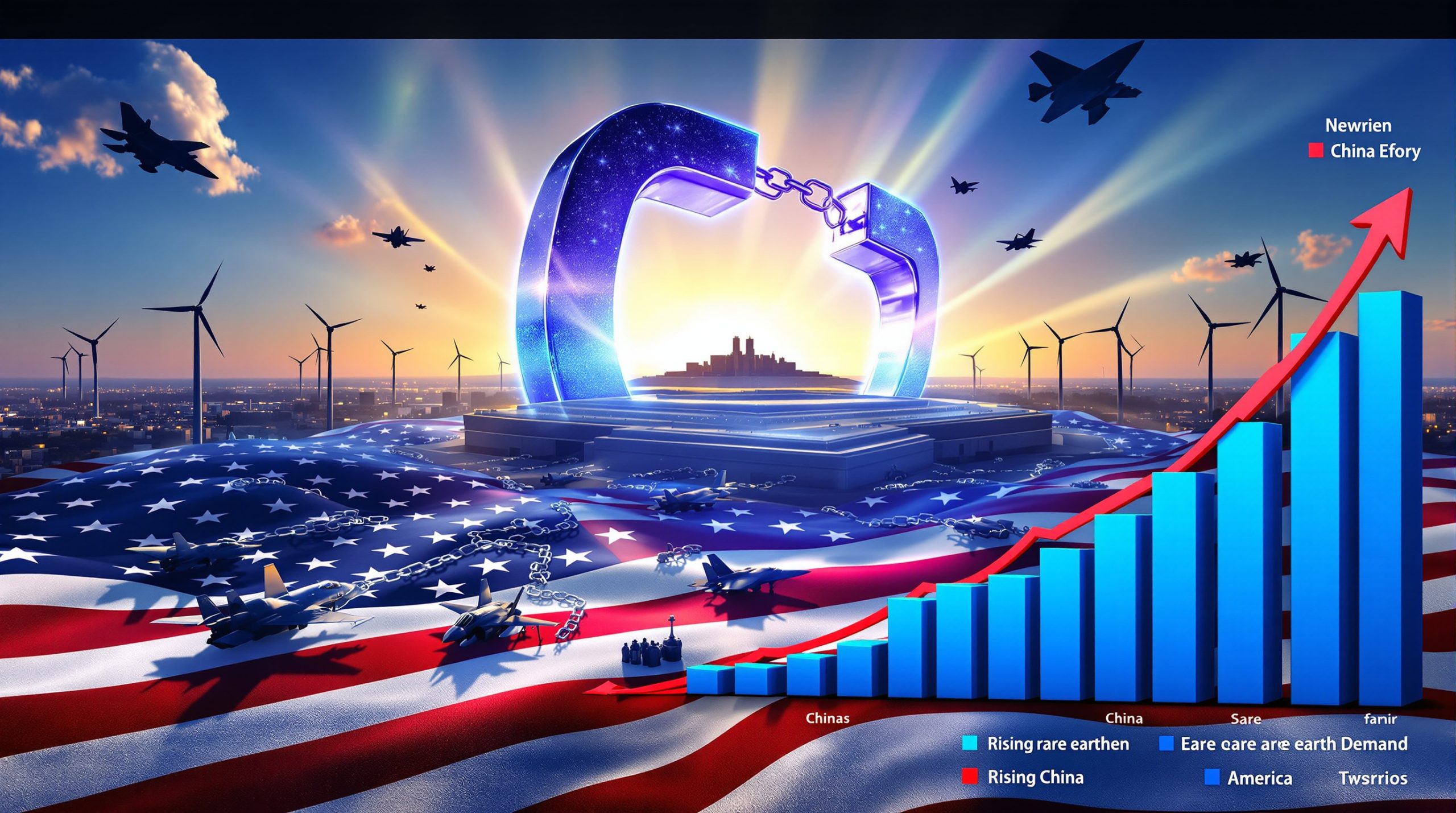Understanding the New Steel and Aluminum Tariffs on Imported Products
The United States Commerce Department has introduced sweeping changes to steel and aluminum tariffs, impacting various sectors including renewable energy. These new measures target a wide range of products with significant steel and aluminum content, aiming to protect domestic manufacturers while raising concerns about increased costs across multiple industries.
Recent Tariff Expansion Details
The US Commerce Department has implemented immediate tariffs on 407 new product categories, marking a significant expansion of existing trade measures. These newly added items are classified as "derivative" steel and aluminum products—finished goods that contain substantial metal components.
The tariffs market impact specifically apply a 50% rate to the steel and aluminum content within these products, rather than taxing the entire value of the imported item. This targeted approach aims to close loopholes in the previous tariff structure.
Under Secretary Jeffrey Kessler explained the rationale: "Today's action expands the reach of the steel and aluminum tariffs and shuts down avenues for circumvention – supporting the continued revitalization of the American steel and aluminum industries."
The new tariffs took effect immediately upon announcement on August 19, 2025, giving industries little time to adjust their supply chains or pricing strategies.
Key Industries Affected
The expanded tariffs cover a diverse range of products across multiple sectors:
- Renewable energy: Wind turbines and components
- Construction equipment: Mobile cranes, bulldozers, and other heavy machinery
- Transportation: Railcars and automotive parts
- Manufacturing: Compressors, pumps, and furniture
- Automotive: Exhaust system parts and electrical steel for electric vehicles
This broad scope reflects the administration's determination to address what it perceives as tariff circumvention through finished goods imports, particularly those with high steel and aluminum content.
Impact on the Renewable Energy Sector
The inclusion of wind turbines in the expanded tariff list poses significant challenges for the renewable energy industry, potentially affecting project costs and timelines during a critical period of clean energy expansion.
Wind Turbine Industry Challenges
Wind turbines rely heavily on steel components, from towers and foundations to internal mechanical systems. With the new 50% tariff applying specifically to the steel content of imported turbines, manufacturers and project developers face substantial cost increases.
These price hikes come at a challenging time for the wind energy sector, which has been working to reduce costs and increase deployment to meet ambitious clean energy targets. The US economy tariffs could potentially slow this momentum by increasing project expenses and extending development timelines.
Supply chain disruptions are another likely consequence as companies scramble to adjust procurement strategies. Many wind energy projects currently in planning stages may need to recalculate budgets and timelines, potentially delaying construction starts.
Project financing could also become more complicated, as investors reassess risk profiles and return projections in light of higher equipment costs. Smaller developers with less financial flexibility may find it particularly challenging to absorb these additional expenses.
Domestic Manufacturing Opportunities
Despite the challenges, the tariffs could provide significant opportunities for US-based wind turbine manufacturers and their suppliers. Companies with established domestic production facilities stand to gain competitive advantage as imported alternatives become more expensive.
The measures create stronger incentives for localizing production of renewable energy components within the United States. This could accelerate existing trends toward domestic manufacturing expansion in the clean energy sector.
Job creation in the domestic steel, aluminum, and wind manufacturing sectors is a potential positive outcome. However, this depends on whether US manufacturers can scale up production quickly enough to meet demand without significant price increases.
There may also be increased investment in material science innovation and engineering redesigns to reduce the metal content in wind turbines, potentially spurring technological advancements that could benefit the industry long-term.
Industry Perspective: While the tariffs aim to boost domestic manufacturing, the renewable energy sector will need time to expand US production capacity. In the short term, project developers may face higher costs and potential delays until supply chains adjust to the new trade environment.
Impact on the Automotive and Transportation Sectors
The automotive industry faces particular challenges from the expanded tariffs, especially as manufacturers ramp up electric vehicle production amid supply chain constraints.
Automotive Parts Specifically Targeted
The new tariffs specifically include automotive exhaust system parts, which affect traditional internal combustion engine vehicles. More significantly, the tariffs apply to electrical steel components critical for electric vehicles, potentially complicating the EV industry transformation.
Foreign automakers had explicitly warned against adding these components to the tariff list, arguing that "the US does not have the domestic capacity to handle current demand" for these specialized parts. This suggests potential supply bottlenecks as manufacturers compete for limited domestic production.
The timing is particularly challenging for the automotive sector, which continues to navigate global supply chain disruptions while accelerating electric vehicle production. The tariffs add another layer of complexity to this already difficult transition.
Component costs will likely increase in the short term, potentially being passed on to consumers through higher vehicle prices. This could slow EV adoption rates if affordability is affected, working against other policy initiatives designed to accelerate electrification.
Railroad Industry Effects
The inclusion of railcars in the tariff expansion has significant implications for the transportation sector, particularly as the country works to modernize and expand rail infrastructure.
Railroad companies planning fleet expansions or replacements now face higher procurement costs for imported railcars. This could delay modernization efforts or increase the expense of infrastructure projects relying on rail transportation.
The tariffs might benefit domestic railcar manufacturers by improving their competitive position against foreign imports. However, as with other sectors, questions remain about whether US production capacity can meet demand without significant delays or price increases.
Infrastructure projects with federal funding may face budget challenges if railcar costs increase substantially. Project planners may need to adjust timelines or seek additional funding to accommodate these higher expenses.
Rationale Behind the US Tariff Expansion
The decision to expand steel and aluminum tariffs reflects both economic and political considerations, continuing a trend of protective trade measures aimed at strengthening domestic manufacturing.
Economic and Industry Protection Rationale
The Commerce Department framed the expansion as necessary to "support the continued revitalization of American steel and aluminum industries." This language suggests the move is part of a broader industrial policy aimed at rebuilding domestic manufacturing capacity.
Cleveland Cliffs and other American steelmakers had actively petitioned the administration to expand the tariffs, particularly to include additional steel and aluminum auto parts. This industry lobbying played a significant role in shaping the final policy decision.
Preventing tariff circumvention appears to be a primary motivation. As companies adjusted to earlier tariffs on raw materials, some shifted to importing finished goods containing those materials, effectively bypassing the original duties. The expansion closes this perceived loophole.
The focus on products like wind turbines and electric vehicle components also suggests strategic targeting of industries considered critical for future economic growth and energy transition, reflecting an intention to ensure domestic manufacturing capacity in these key sectors.
Political and Trade Context
The tariff expansion continues a protectionist trade policy approach that has characterized US trade relations in recent years. It signals a willingness to use trade war strategies as a tool for industrial policy despite potential tensions with trading partners.
Global overcapacity in steel and aluminum production, particularly from certain Asian markets, has been a longstanding concern for US producers. The expanded tariffs can be viewed as a response to these persistent market conditions.
The timing and scope of the expansion may also provide negotiating leverage in ongoing international trade discussions. By demonstrating a willingness to implement and expand tariffs, the US creates bargaining chips for future trade agreements.
The focus on energy transition components like wind turbines and EV parts suggests the administration is attempting to balance climate goals with manufacturing priorities, ensuring that the shift to clean energy benefits domestic producers.
Economic Implications of the Expanded Tariffs
The economic impacts of these tariffs will vary significantly across industries and company sizes, with both immediate costs and potential long-term benefits for domestic manufacturing.
Cost Analysis for Affected Industries
Immediate price increases for the 407 newly targeted imported products are virtually guaranteed. The 50% tariff on steel and aluminum content represents a substantial cost addition that importers must either absorb or pass along to customers.
For major infrastructure projects and large equipment purchases, these increased costs could have significant budget implications. Wind farm developers, construction companies, and transportation agencies may need to revise financial projections for ongoing and planned projects.
Supply chain restructuring costs will affect many companies as they evaluate alternatives to imported products. This may include expenses related to identifying new suppliers, qualifying alternative products, or investing in domestic manufacturing.
Some businesses may engage in inventory stockpiling of affected products if they anticipated the tariff implementation, potentially creating short-term market distortions and temporary shortages for certain components.
Financial Consideration: Projects with fixed-price contracts signed before the tariff announcement may face margin compression if they cannot pass along the increased costs, creating financial stress for contractors and suppliers.
Domestic Manufacturing Benefits
US steel and aluminum producers stand to benefit from increased demand as importers seek domestic alternatives. Plants operating below capacity may be able to increase utilization rates, improving operational efficiency and profitability.
Job creation opportunities could emerge in metals manufacturing, fabrication, and related industries if domestic production expands to meet demand. However, the net employment effect depends on whether job gains in these sectors outweigh potential losses in industries negatively affected by higher input costs.
The tariffs enhance competitiveness for domestic producers of finished goods that use steel and aluminum. With imported alternatives now more expensive, US manufacturers may gain market share if they can maintain competitive pricing.
Companies that had previously offshored production may reconsider reshoring manufacturing operations to avoid the tariffs. This could lead to new facility investments and expanded domestic production capacity over the medium to long term.
Potential International Responses
The expanded tariffs are likely to provoke reactions from international trading partners, potentially creating additional economic complications and trade tensions.
Potential Retaliatory Measures
Major trading partners affected by the tariffs may implement counter-tariffs targeting US exports. Historical patterns suggest these retaliatory measures often focus on politically sensitive products from key electoral regions.
Formal challenges through World Trade Organization mechanisms are likely, though the resolution process can be lengthy. These challenges may question whether the tariffs comply with international trade agreements and obligations.
Targeted responses might come from countries particularly affected by specific product categories. For instance, nations with significant wind turbine manufacturing might focus retaliatory measures on US renewable energy exports or intellectual property.
The expansion could complicate ongoing trade negotiations and relationships, potentially affecting progress on other trade issues unrelated to steel and aluminum.
Global Supply Chain Adjustments
International manufacturers may reroute production and assembly operations to minimize tariff impacts. This could include shifting final assembly to the US while sourcing components from existing global suppliers.
Trade flows for affected products will likely shift as companies seek to optimize their supply chains under the new tariff structure. This may create opportunities for countries not subject to the same tariff levels.
Transshipment through third countries could increase as companies look for ways to reduce tariff burdens. This might prompt additional enforcement measures or resource export challenges to prevent circumvention.
Long-term restructuring of international manufacturing networks is probable as companies adjust to the persistent tariff environment. This could lead to more regionalized production patterns rather than globally integrated supply chains.
Long-Term Market Implications
The expanded tariffs will likely have lasting effects on markets, pricing, and industrial strategies across multiple sectors.
Price and Supply Forecasts
Industries with high steel and aluminum content in their products will likely see persistent cost increases until supply chains fully adjust. This may take several years depending on how quickly domestic manufacturing capacity can expand.
Market share shifts between domestic and foreign suppliers are inevitable, with US producers gaining advantage in price-sensitive segments. However, in specialized product categories where domestic capacity is limited, importers may maintain market share despite higher prices.
Supply constraints are probable during the market adjustment period, particularly for specialized components with limited domestic production. This could create bottlenecks for manufacturers and project developers relying on these inputs.
Price volatility in affected commodity markets may increase as supply and demand dynamics adjust to the new trade environment. This could complicate planning and budgeting for businesses that rely heavily on steel and aluminum inputs.
Industry Adaptation Strategies
Material substitution efforts will likely accelerate as manufacturers seek alternatives to reduce tariffed content. This could drive innovation in composite materials, advanced plastics, and other non-metallic alternatives.
Product redesigns to minimize steel and aluminum usage present both challenges and opportunities. While redesigns require investment, they may yield lighter, more efficient products with improved performance characteristics.
Manufacturing relocation to the US will become more financially attractive for products with high tariff exposure. Companies with global production networks may shift capacity to US facilities or establish new domestic operations.
Strategic partnerships between importers and domestic suppliers will likely emerge as companies seek to secure reliable, cost-effective supply chains. These arrangements may include long-term contracts, joint ventures, or technology transfers to expand domestic production.
FAQ: Steel and Aluminum Tariffs on Imported Products
When do these new tariffs take effect?
The expanded tariffs on the 407 newly added product categories took effect immediately upon announcement by the US Commerce Department on August 19, 2025. This immediate implementation gave industries little time to adjust their supply chains or pricing strategies.
Which specific products are covered by the new tariffs?
The expanded tariffs cover wind turbines, mobile cranes, bulldozers, railcars, furniture, compressors, pumps, automotive exhaust systems, and electrical steel components for electric vehicles. The comprehensive list includes 407 product categories classified as "derivative" steel and aluminum products.
How are the tariff rates calculated?
The tariffs apply a 50% rate specifically to the steel and aluminum content within the affected products, not to the entire value of the imported item. This means the effective tariff rate varies depending on how much steel or aluminum is contained in each product.
Who advocated for these expanded tariffs?
Domestic steel producers, including Cleveland Cliffs, petitioned the administration to expand the tariffs to include additional steel and aluminum products, particularly automotive parts. Industry groups representing US manufacturing interests were key supporters of the expansion.
How might these tariffs affect renewable energy goals?
The tariffs could potentially increase costs for wind energy projects, potentially slowing deployment rates unless domestic manufacturing capacity expands to meet demand at competitive prices. Project developers may face higher equipment costs and longer lead times, potentially affecting project viability and financing.
Future Outlook for Affected Industries
The full impact of these expanded tariffs will unfold over months and years as markets adjust and companies implement strategic responses. Initial price increases and supply disruptions may gradually give way to expanded domestic production and manufacturing innovation.
For the wind turbine industry specifically, the tariffs present both immediate challenges and potential long-term opportunities. While project costs may increase in the near term, the measures could accelerate domestic manufacturing capacity and technological innovation in the sector.
Policymakers will likely monitor the effects closely, potentially adjusting the scope or implementation of the tariffs based on market responses and economic impacts. The interplay between these trade measures and other policies supporting renewable energy development will be particularly important to watch.
Companies across affected industries are advised to evaluate their supply chains comprehensively, consider strategic partnerships with domestic suppliers, and explore material or design innovations that could reduce reliance on heavily tariffed components.
Disclaimer: This analysis represents the current understanding of the tariff expansion and its potential implications. Actual impacts may vary based on market conditions, implementation details, and potential future policy adjustments. Companies should consult with trade and legal experts when making business decisions related to these tariffs.
Want to Spot the Next Major Mineral Discovery?
Discovery Alert's proprietary Discovery IQ model delivers instant notifications on significant ASX mineral discoveries, empowering investors to identify actionable opportunities before the broader market. Understand why major mineral discoveries can lead to exceptional returns by exploring Discovery Alert's dedicated discoveries page.




